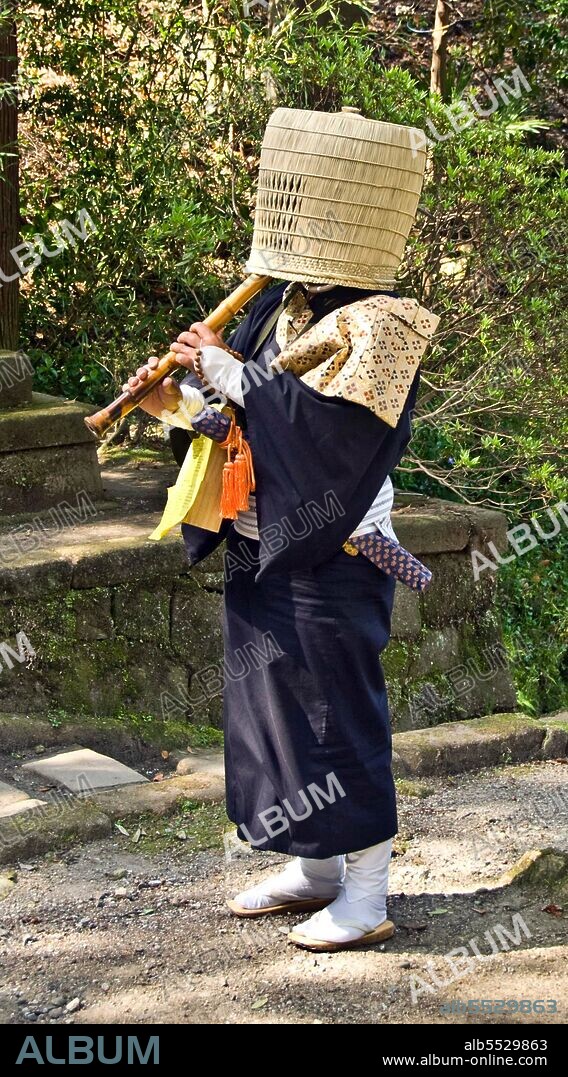alb5529863
Japan: A komuso< / i> or mendicant Buddhist monk in Kita-Kamakura, April 2008

|
Añadir a otro lightbox |
|
Añadir a otro lightbox |



¿Ya tienes cuenta? Iniciar sesión
¿No tienes cuenta? Regístrate
Compra esta imagen

Título:
Japan: A komuso< / i> or mendicant Buddhist monk in Kita-Kamakura, April 2008
Descripción:
Ver traducción automática
The komuso (??? komuso, Hiragana ????; also romanized komusou or komuso) were a group of Japanese mendicant monks of the Fuke school of Zen Buddhism who flourished during the Edo period of 1600-1868. Komuso were characterized by a straw basket (a sedge or reed hood named a tengai or tengui) worn on the head, manifesting the absence of specific ego. They were also known for playing solo pieces on the shakuhachi (a type of Japanese bamboo flute). These pieces, called honkyoku ('original pieces') were played during a meditative practice called suizen, for alms, as a method of attaining enlightenment, and as a healing modality. The Japanese government introduced reforms after the Edo period, abolishing the Fuke sect. Records of the musical repertoire survived, and are being revived in the 21st century.
Crédito:
Album / Pictures From History/Universal Images Group
Autorizaciones:
Modelo: No - Propiedad: No
¿Preguntas relacionadas con los derechos?
¿Preguntas relacionadas con los derechos?
Tamaño imagen:
2828 x 5100 px | 41.3 MB
Tamaño impresión:
23.9 x 43.2 cm | 9.4 x 17.0 in (300 dpi)
 Pinterest
Pinterest Twitter
Twitter Facebook
Facebook Copiar enlace
Copiar enlace Email
Email
